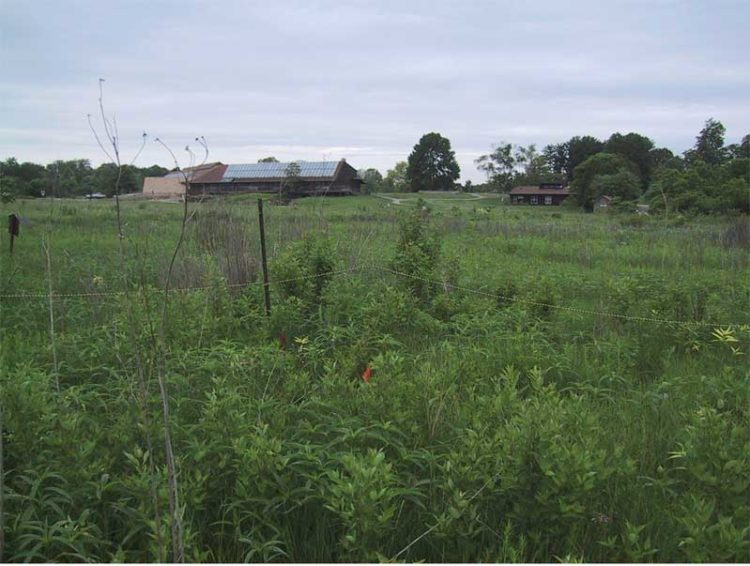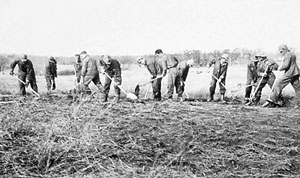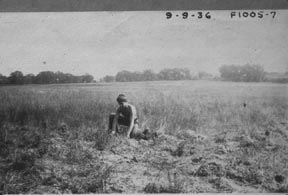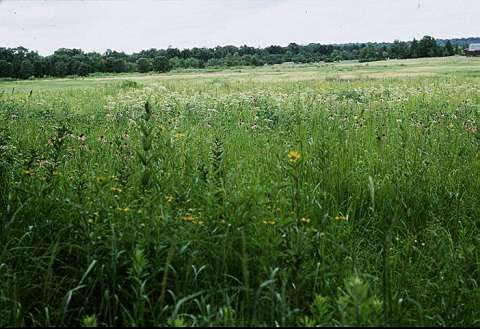Overview
Curtis Prairie at the University of Wisconsin-Madison Arboretum is the site of the world’s first ecological restoration project. Begun in 1936 by Dr. Theodore Sperry, with supervision and support from Aldo Leopold and William Longenecker, the project has been ongoing for more than seventy years and has yielded a wealth of research data about the dynamics of tallgrass prairie ecosystems and the practices most effective in their restoration and management. Indeed, investigations conducted at the Curtis Prairie site have assisted practitioners elsewhere in designing and implementing tallgrass prairie restorations. Throughout its history, the Curtis Prairie project has been an asset not only for the academic community at the University of Wisconsin, but for the entire field of restoration ecology.
Quick Facts
Project Location:
43.0428709, -89.4243205
Geographic Region:
North America
Country or Territory:
United States of America
Biome:
Grassland/Savanna
Ecosystem:
Grasslands & Savannas - Temperate
Area being restored:
25 hectares
Project Lead:
University of Wisconsin
Organization Type:
University / Academic Institution
Location
Project Stage:
Implementation
Start Date:
2007-08-15
End Date:
2007-08-15
Primary Causes of Degradation
Agriculture & LivestockDegradation Description
The tallgrass prairie ecosystem is one of the most threatened ecosystems in the Midwest United States (Wisconsin Department of Natural Resources 1995). The relatively flat topography and fertile prairie soils encouraged the conversion of prairie for agricultural purposes. The 25-hectare area that would become Curtis Prairie was first settled for farming in 1836. After eleven owners, the Bartlett family purchased the land in 1860. By 1863 the western two-thirds of the land was regularly plowed and planted with corn, oats and pasture in rotation. The wetter eastern third was probably not plowed, with the northern section undisturbed and the southern half used for a mowing meadow. The Bartlett family abandoned cultivation in 1920. The land was fallow until 1926 or 1927 when a veterinarian named West leased the land to pasture 35 to 40 horses. This pasture incorporated the eastern third of the property, including the previously undisturbed section and the mowing meadow (Blewett & Cottam 1984).
By 1932 the University of Wisconsin Arboretum was becoming a reality. In that year, a part of the Nelson farm was purchased, and in 1933, the University of Wisconsin regents purchased the Bartlett farm. When the fields were purchased, quackgrass (Agropyron repens) dominated the fields. Eventually, two bluegrass species (Poa pratensis and P. compressa) took over (Blewett & Cottam 1984). All three species are considered weedy and non-native components of tallgrass prairies. The creation of a prairie within the Arboretum proved challenging. Not only was this the first ecological restoration, there was also very little tallgrass prairie habitat left to characterize reference conditions. In fact, in The Vegetation of Wisconsin, John Curtis (1959) estimates that the original area of over 800,000 hectares has been reduced to remnants, with none larger than 16 hectares.
Reference Ecosystem Description
Although grasses comprise only 10% of the species, they constitute most of the biomass in tallgrass prairies. The dominant grasses vary across a moisture gradient ranging from xeric (dry), mesic (moist), and wet prairies. Common grasses include little blue stem (Schizachyrium scoparium), big bluestem (Andropogon gerardii) and indian grass (Sorghastrum nutans). Forbs, another important prairie component, align themselves along a similar moisture gradient. These herbaceous species add seasonal color and texture to prairie vegetation. Besides grasses, the most common plant families in tallgrass prairies include composites and legumes (Cochrane & Iltis 2000).
Project Goals
The restoration goal was to replace pasture and ruderal vegetation with species of native plants for use in research and education. Over the decades that followed the dedication of the Arboretum in 1934, scientists from the University of Wisconsin conducted many experiments involving planting methods and controlled burning. These experiments were aimed at increasing the number of native plant species and decreasing the abundance of weedy and exotic plant species.
Monitoring
The project does not have a monitoring plan.
Stakeholders
Since its inception in 1936, the Curtis Prairie restoration project has provided innumerable opportunities for scientific research on tallgrass prairie restoration and has afforded a more complete understanding of tallgrass prairie ecosystems in general. Many students and faculty members from the University of Wisconsin-Madison have been involved in the ongoing management of the site, and its value as an educational tool has therefore been tremendous.
Description of Project Activities:
From 1936 to 1940, Dr. Theodore Sperry directed the first effort to establish a prairie with supervision from Aldo Leopold and William Longenecker. About 200 recruits of the Civilian Conservation Corps (CCC) planted 42 plant species in large blocks within 237 plantings. Three methods of planting were tested: seeds, seedlings and sod transplants. This approach likely represents the first example of experimentation in a restoration site. Prairie remnants along the Wisconsin River provided a source of native seeds and sods, and the seedlings were cultivated in a nursery within the prairie. The establishment rates for the planting treatments were similar, but the sod transplants had slightly higher survival; however, the expense of the sod techniques far outweighed the benefits (Blewett & Cottam 1984).
Between 1950 and 1957, a second major planting program added 156 species to selected areas of Curtis Prairie. New planting methods were utilized: seed casting after a burn, hand insertion of large seeds, transplanting sods, and disking followed by seed casting with the addition of cover crops. The last method provided the best results (Blewett & Cottam 1984; Wilson 1964).
Curtis Prairie also supported experiments on soil preparation, plant competition, controlled fire treatments, and germination studies. John T. Curtis, Professor of Botany at the University of Wisconsin, carried out many of these important studies. Between 1937 and 1948, 91 species were collected from prairie remnants in southern and western Wisconsin for germination experiments. Most prairie grass and forb seeds were shown to depend on stratification (overwintering or cold treatment) for germination (Green & Curtis 1950).
Between 1941 and 1946, John Curtis and Max Partch studied the effects of fire on the competition between bluegrass (Poa spp., from the former pasture) and prairie plants. They applied controlled fire treatments to plots burned in March, May or October on an annual or biennial schedule. Bare ground, prairie perennials and weedy forbs greatly increased in the burned 7.6m x 67m plots, but after six years, the bluegrass was reduced to one-fifth its original area in the burned plots (Blewett & Cottam 1984).
When Curtis became the Arboretum Research Coordinator, he scheduled prairie burns with a frequency of about every three years and every other year in some areas (Blewett & Cottam 1984). This burn frequency was increased by Virginia Kline (1986), in light of her research on the response of the invasive biennial sweet clover (Melilotus alba) to consecutive burns. Because the growth and reproduction of sweet clover occurs within two years, portions of the prairie with burns over two consecutive years greatly reduced the population of sweet clover. Thus, experimentation has characterized attempts to increase the ratio of native prairie plants to invasive species throughout Curtis Prairie's history as a restoration site.
Ecological Outcomes Achieved
Eliminate existing threats to the ecosystem:
As the first ecological restoration project, work at Curtis Prairie began when little was known about the ecology of prairies in Wisconsin. The site has always been valuable for research, and plant composition continues to be assessed at about five-year intervals. The question remains as to how much Curtis Prairie resembles a native tallgrass prairie. An early comparison of Curtis Prairie and native prairie remnants showed that the vegetation and community structure were similar with the exception of far more non-prairie species in Curtis Prairie (Cottam & Wilson 1966). Also, a University of Wisconsin Soil Scientist, Francis Hole, found that the site was beginning to recover prairie soil characteristics. Whereas 90 years of agricultural use likely oxidized 50,000 kg of organic carbon per hectare, about 60% was regained between 1940 and 1959. While the soils of Curtis prairie are beginning to recover their former structure, prairie soil horizons form over long periods of time, developing in 500 to 4,000 years (Anderson 1972).
Plant community structure and soil formation are indicators of restoration progress but not necessarily of the site's ability to support native wildlife. Native fauna in Curtis prairie includes deer and coyote. Bison and elk, along with larger carnivores, are absent and clearly never will be present because the site is too small to support them. Small mammals and arthropods are limited to generalist species. The status of the fungal and bacterial communities of the soil is largely unknown. Mound building ants are the major soil cultivators of tall grass prairie, but ant mounds are only present in the unplowed area in the eastern section of Curtis Prairie (Howell & Kline 1987). Likewise, many of the grassland bird species that are declining in grasslands region wide are missing including bobolinks and Henslow's sparrows (Mossman 1984).
Factors limiting recovery of the ecosystem:
Fire was an important factor limiting the initial success of the Curtis Prairie's restoration. Though the prevalence of fire in tallgrass prairies in historic times was well documented, its role in the ecology of prairies was not clearly understood. Restoration efforts at the Arboretum began without employing fire, and the results were highly unsatisfactory. Reintroduced prairie natives flourished, but so did a host of weedy, non-prairie species, which prevented the natives from closing together to create a real prairie. Research carried out on the Arboretum prairies soon established the critical role of fire in the ecology of the tallgrass prairies of the upper Midwest.
The development that has occurred subsequent to the original replanting efforts has given rise to other challenges and limiting factors. As the city of Madison grew up around the Arboretum, highway 12-18 (also known as the "beltline") to the south of Curtis Prairie was widened in 1956, causing a substantial loss of the buffer of planted pine trees. Also, the roadwork caused erosion as well as deposition of sediments that buried some of the prairie (Blewett & Cottam 1984). Additional roadwork in 1959 and increasing runoff from urban development to the south perpetuated the problems of urban runoff. By 1969, a siltation pond had been added near the southern edge of the prairie to collect flows from a culvert that conveys urban runoff under highway 12-18. Because Curtis prairie slopes gently from southwest to northeast, water flowing out of the pond gradually eroded a creek that now dissects Curtis Prairie, providing opportunity for the extremely aggressive reed canary grass (Phalaris arundinacea) to establish along the creek's floodplain.
A north-south road historically used as a fire lane impounded runoff and allowed a stand of willows (Salix exigua) to establish along with reed canary grass in the wettest areas. Recently, an "Arizona crossing" was installed to allow flow over the road, but the willows remain and have not significantly decreased despite management burning.
Finally, the pine trees that were planted as a buffer along the highway have grown tall, shading the prairie's southern edge while functioning less as a noise and visual block to an increasingly busy traffic route. The degradation of the southern edge of the prairie was increased by the disposal of dredge spoils from the detention pond, which were placed in a linear mound that is now dominated by reed canary grass.
Socio-Economic & Community Outcomes Achieved
Key Lessons Learned
Throughout its 68-year history, experimentation and management of Curtis Prairie has significantly increased our understanding of restoration ecology. Current prairie planting techniques and burn schedules have benefited greatly from the early experiments conducted on Curtis Prairie. This restoration also highlights the influence of the surrounding landscape on processes at the restoration site. In this case, the altered hydrology due to urbanization within the watershed requires continuous monitoring and management of the prairie. While Curtis prairie may be the oldest prairie restoration in the world, it is clearly still a work in progress. Nonetheless, it has provided valuable lessons that help guide tallgrass prairie restoration:
1. Weed removal during site preparation – to this day the weed species like sweet clover that were on the former agricultural site continue to persist. Elimination of invasive weeds during site preparation appears to be critical to success in the long run.
2. Planting diversity – Unless a project is surrounded by a quality natural area (the Curtis Prairie is surrounded by an suburban environment), the only species you will find years later, are the ones you planted. Therefore, it is important to plant as much diversity as is available and that you can afford at the time. Adding diversity years later, has not been shown to be successful.
3. Vegetation management – the Curtis Prairie is as successful as it is, because of continued maintenace. Management of existing weeds through pulling, cutting, spraying and burning have provided opportunities for learning, as well as one of the most successful prairie plantings done so far. Roadside plantings will need spot treatments to ward off noxious weeds.
Long-Term Management
At present, most of the management decisions being made for Curtis Prairie concern fire regimes and the use of herbicide to control invasive species. The current fire management regime burns each part of the prairie two out of three years on average. This pattern of burns controls the outbreaks of sweet clover with only an occasional need to weed this species by hand. Frequent burns not only control invasive species but also curtail the encroachment of woody species into the prairie.
The problems associated with the urban development around Curtis Prairie, such as reed canary grass, continue to challenge restoration ecologists. These types of management issues at Curtis Prairie illustrate the need for adaptive management. Currently, the management decision-making process includes the Arboretum Ecologist, who devises the management plan, and the Land Care Manager, who supervises the implementation of the plan. The Arboretum Ecologist and the Land Care Manager receive feedback from researchers on a monthly basis via a “Research Coordination Group”. The Arboretum Ecologist and Land Care Manager report to the Arboretum Director who is supervised by the Dean of the Graduate School. While this system allows for both structure and flexibility, it does not fulfill the need for adaptive management.





